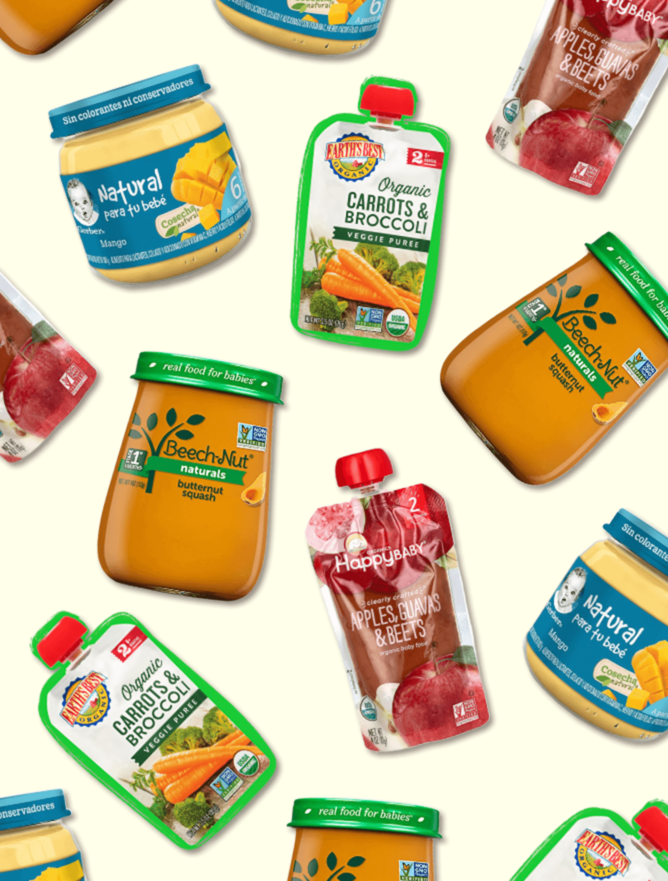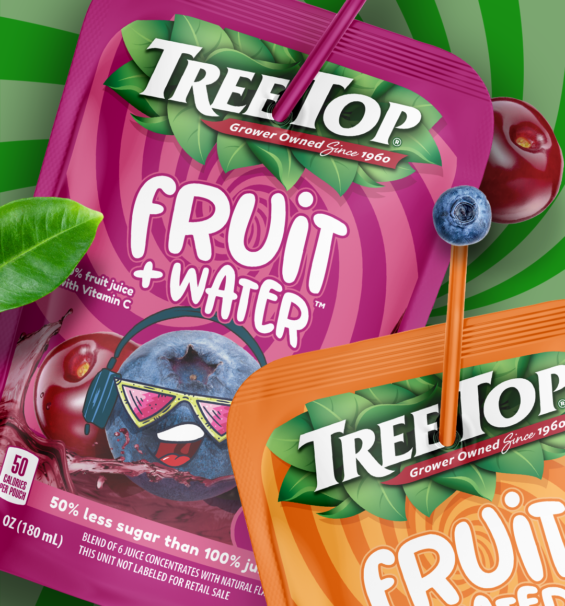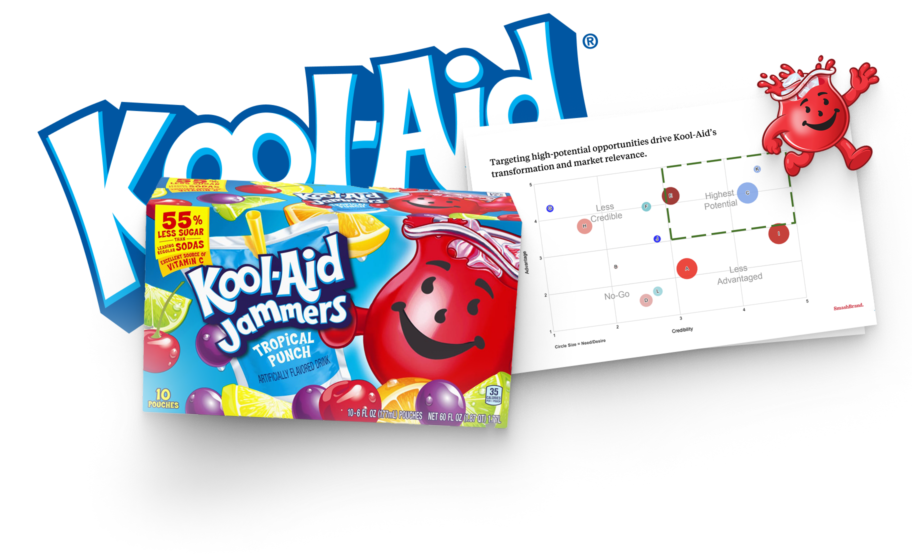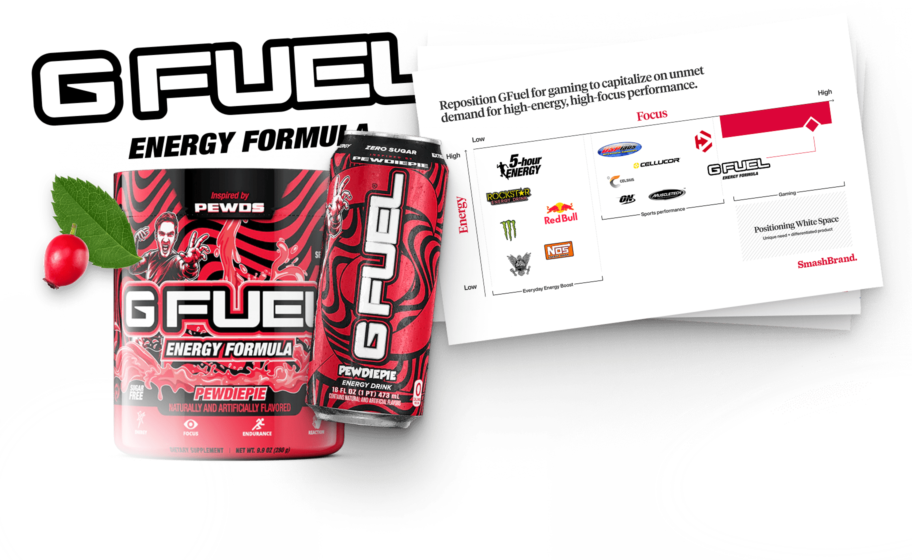Unlike standard CPG products, baby food isn’t an impulse buy—it’s a trust buy. Parents don’t browse; they search for immediate answers: Is it safe? Nutritious? Easy to use? Your baby food packaging design must convey those trust signals instantly. Because when it comes to feeding their child, parents choose with confidence, not curiosity.
The global baby food packaging market, valued at $7.04 billion in 2024, is set to reach $11.42 billion by 2032, growing at a 6.28% CAGR. With more brands entering the space—from organic pouches to infant formula cans—the shelves are more crowded than ever. Winning in this market isn’t just about standing out and securing loyalty. Impactful packaging attracts first—time buyers and turns them into repeat customers.
This article explains what it takes to create an impactful baby food packaging design that wins. You’ll discover the key elements that drive purchase decisions and how to design packaging that captures parents’ attention—and their trust.
How baby food packaging design impacts a parent’s purchase decision.
Flashy designs and trendy colors don’t sell baby food, but trust does. Parents look for clean ingredients, clear nutritional benefits, and packaging that makes feeding easier. Whether they’re buying formula, organic purees, or frozen meals, they need reassurance before the purchase, not after.
This is where smart packaging design becomes a silent persuader. An effective format answers questions before they’re even asked. Spouted pouches and flexible packaging signal convenience, which is ideal for on-the-go feeding. A resealable cap? That’s peace of mind—no spills in the diaper bag.
What parents prioritize on baby food packaging.
Baby food brands must understand what drives parents’ decisions to win their trust and enhance sales growth. Here are the key factors that make packaging a priority in their selection process:
Ingredient transparency.
Parents today demand complete transparency about what they feed their babies. A significant 85% of parents identify packaging as the first aspect they notice about a product, and 51% consistently check nutritional information before purchasing. They scrutinize labels for organic, non-GMO, and allergen-free certifications to ensure the product meets their standards. They will likely choose alternative options when such information is absent or unclear.
The design of the packaging plays a crucial role in building trust. Transparent windows on packaging can enhance consumer trust by allowing parents to see the product inside, reinforcing perceptions of quality and safety. Clear and straightforward labeling also strengthens this trust, enabling parents to make informed decisions confidently.
In summary, ingredient transparency is essential for parents, not just a preference. Packaging that communicates this transparency through design elements and straightforward labeling can significantly influence purchasing decisions, building brand loyalty and trust.
Nutritional clarity.
Parents are more vigilant about the nutritional content of baby food products, demanding clear and transparent labeling that explains how the product supports their child’s growth and development. A study published in the Journal of the Academy of Nutrition and Dietetics found that 66% of parents base their purchasing decisions on their children’s preferences, underscoring the need for appealing and easy-to-read packaging design.
Too many claims on pouch packaging can overwhelm consumers, making it difficult for them to absorb key details. Research shows that excessive labeling on stand-up pouches and other packaging solutions can diminish the effectiveness of the presented information. To stand out on the shelf, brands must strategically design their packaging to highlight essential nutrients like iron, DHA, and probiotics.
A well-structured product design ensures parents can quickly identify the most relevant health benefits while considering shelf life and ingredient transparency. Whether infant formula in a bottle or purees in a stand-up pouch, a clear and compelling packaging solution helps build trust and influence purchasing decisions.
Baby food brands must utilize intelligent packaging design to convey nutritional benefits effectively. By highlighting key ingredients and optimizing pouch designs, brands can meet parents’ expectations, build brand loyalty, and drive long-term success.
Safety features.
If the packaging material feels flimsy or insecure, parents won’t buy. They expect tamper-proof seals, BPA-free materials, and child-safe closures that prevent spills and leaks. CPG brands may ensure the following safety features in their baby food product packaging to gain a competitive edge.
- Tamper-Proof Seals: Ensuring product integrity is non-negotiable. Packaging equipped with tamper-evident features provides parents with immediate visual confirmation that the product remains untouched since production.
- BPA-Free Materials: Health-conscious consumers are increasingly vigilant about chemical exposures. The shift toward BPA-free packaging materials aligns with the growing preference for organic baby food and reflects a commitment to infant health.
- Child-Safe Closures: It is critical to prevent accidental spills and ensure ease of use. Innovations such as spouted pouches with anti-choke caps or baby food pouches with resealable zippers enhance safety and add convenience for on-the-go feeding.
While rigid containers have traditionally been favored for their perceived sturdiness, there’s a notable shift toward sustainable packaging solutions. Well-designed stand-up pouches, for instance, offer durability and reduce environmental impact. The global baby food packaging market is growing, driven by the increasing demand for innovative and sustainable packaging.
Convenience.
Parents prioritize convenience while on the go. A well-designed baby food pouch or stand-up pouch fits easily into a diaper bag, while spouted pouches enable mess-free feeding. Storage is another essential factor—compact packaging formats that stack neatly or flexible pouches that occupy less space in the fridge or pantry are preferred. Sustainable packaging that combines convenience with eco-friendly materials gives brands an advantage with environmentally conscious consumers.
Critical elements of impactful baby food packaging.
The following are some of the critical elements that shape baby food packaging design principles:
Clarity matters.
Parents don’t have time to decode cluttered baby food packaging. If your packaging design doesn’t deliver key information instantly, it loses to competitors. Ingredients, nutritional benefits, and preparation instructions must be legible and well-organized.
Without overwhelming the package, a strong brand strategy highlights key selling points like organic, non-GMO, or iron-fortified. Poor packaging design leads to hesitation, and hesitation in a crowded aisle means lost sales. Winning brands prioritize clarity, ensuring their message is seen, understood, and acted on within seconds.
Design must be functional, not just beautiful.
Great packaging design isn’t just about looking good—it has to work. If a baby food product is challenging to open, store, or reseal, parents will move on. Functional design elements—like plastic containers with easy-grip lids, spouted pouches for one-handed feeding, and portion-controlled packs—make daily use effortless.
Innovation in packaging products, such as collapsible pouches for space-saving storage or stackable jars for organized pantries, ensures that baby food packaging is as practical as it is eye-catching. Brands prioritizing functional design don’t just win at the shelf—they win in parents’ daily routines.
Safety isn’t optional.
For parents, food safety is non-negotiable. They expect tamper-proof seals, BPA-free materials, and secure closures that prevent spills and contamination. Every packaging product must meet high safety standards:
- Plastic containers should be durable, non-toxic, and free from harmful chemicals.
- Lids must be designed to eliminate choking hazards while ensuring a tight seal.
- Packaging formats should extend shelf life, keeping baby food products fresh without unnecessary preservatives.
When brands prioritize safety in packaging design, they protect the product and build long-term consumer trust.
Sustainability is a growing factor.
As environmental awareness grows, parents prefer brands that reduce packaging waste. Sustainable materials, compostable pouches, and refillable plastic containers are gaining traction.
Brands that integrate eco-friendly solutions into their brand strategy appeal to eco-conscious consumers and future-proof their products in an evolving market. In an industry where product innovation is constant, balancing food safety with sustainability is key to long-term success.
Steps to creating impactful baby food packaging design.
Designing baby food packaging isn’t just about aesthetics—it’s about creating a package that resonates with parents, works in real-life scenarios, and performs on supermarket shelves. Here’s how to ensure your baby food brand creates appealing packaging, builds trust, and drives sales.
Know your audience before designing.
Before selecting materials, colors, or shapes, it’s essential to understand what parents need. A parent buying for a toddler has different priorities than shopping for an infant’s first solids. While some prefer resealable plastic packaging for on-the-go feeding, others want glass jars for organic ingredients that align with their sustainability values.
Category trends also matter. Luxury packaging design might work for premium, organic purées, while cost-conscious consumers may prefer simple yet effective FMCG packaging design. Identifying the right product type and target demographic ensures that the packaging speaks directly to the intended audience.
Test messaging and claims.
Once the packaging structure is defined, the next step is refining the wording and claims. The packaging must instantly communicate why the baby food brand is the best choice. The goal is to hook the busy parent and turn them into a loyal buyer.
A/B testing different messages helps determine what resonates best. Does “Made with organic ingredients” perform better than “100% Natural”? Are parents more drawn to “Iron for Brain Development” or “Supports Toddler Growth”? Testing allows brands to eliminate confusing or ineffective messaging before a full launch.
Ensure real-world usability.
Packaging must be functional beyond supermarket shelves. If parents struggle to open, store, or reseal a package, they won’t repurchase it. Modern packaging design should prioritize easy handling, whether a one-handed plastic solution or a portion-controlled product.
Usability testing is essential. Does the pouch dispense the right amount of food without a mess? Does the lid stay secure on a diaper bag? Is the design practical for toddler feeding? By addressing these questions early, brands ensure that their FMCG packaging design is visually appealing and parent-approved.
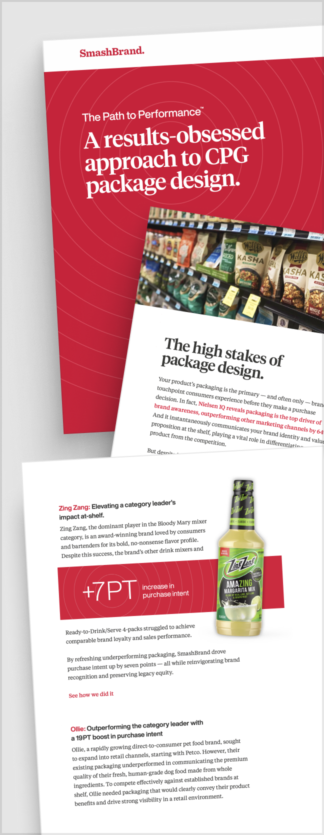
Path to Performance™
Taking a results-obsessed approach to CPG package design.
Learn how SmashBrand’s proprietary process – rooted in scientific principles, informed by data, and validated by your target audience – takes the guesswork out of package design and delivers guaranteed results.
"*" indicates required fields
How innovative baby product packaging design leads to brand success.
Effective baby product packaging design creates a seamless experience that earns trust, drives sales, and keeps parents returning. When done right, packaging becomes a silent ambassador for the brand, influencing purchase decisions in seconds.
Great packaging builds trust and loyalty.
When parents buy a product, they invest in a trusted brand. Once they find a baby product they believe in, they rarely switch. The right packaging design enhances that trust by ensuring food safety, transparency, and ease of use.
Whether a beverage packaging design for infant formula or a squeezable pouch for purees, high-quality materials and thoughtful design reassure parents that the product inside meets their expectations.
Differentiation is key in a crowded market.
The baby food aisle has similar options, making packaging design a powerful differentiator. A brand must stand out while still fitting category norms. This is where minimalist vs. maximalist packaging design strategies come into play. A minimalist approach—clean labels, soft colors, and straightforward typography—communicates purity and natural ingredients.
A maximalist approach—bold graphics, vibrant colors, and playful illustrations—attracts attention and creates a strong brand personality. The key is choosing a style that aligns with consumer expectations while setting the brand apart.
Clear messaging drives higher sales.
If parents don’t immediately understand the product’s benefits, they won’t buy it. Packaging must highlight essential claims within seconds. Cluttered labels confuse, while clear, well-structured messaging converts. Whether using premium packaging design or beverage packaging design elements like icons, typography, or callouts, the best packaging makes choosing a product effortless.
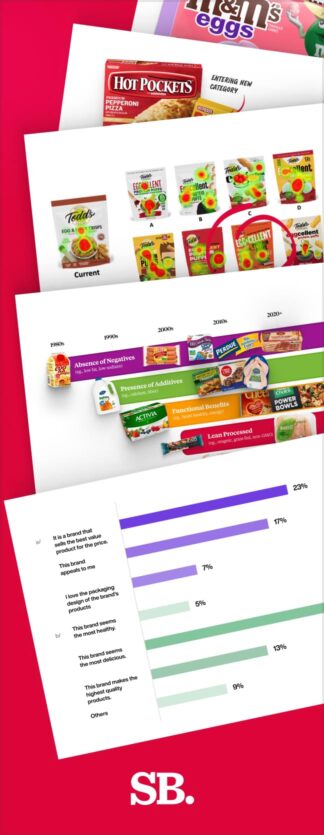
Nice Package
Don’t miss out on our monthly newsletter Nice Package!
Each month, we deliver a data-driven newsletter directly to your inbox, unpacking a critical topic in the FMCG & CPG industry.
"*" indicates required fields
Why most baby product packaging designs fail.
Impactful baby product packaging is crucial for capturing parental trust and driving sales. However, many designs fail due to several key factors:
Subjectivity over data-driven decisions.
Brands often prioritize gut feelings or current design trends over concrete consumer behavior data. This approach can lead to packaging that doesn’t resonate with the target audience. For instance, a packaging redesign without proper market research can alienate or confuse loyal consumers, leading to overlooked products on retailers’ shelves.
Overcomplicated messaging.
Cluttered or complex packaging can confuse buyers and diminish shelf impact. Unsuccessful packaging often fails to communicate its contents or brand values effectively, resulting in consumer confusion and poor market performance.
The disconnect between research, design, and real-world testing.
A lack of cohesion between research, design, and practical application can result in packaging that looks appealing in concept but fails in real-world settings. Packaging that appears excellent in a pitch deck may not perform well in actual shopping environments, leading to consumer frustration and decreased sales.
Lack of pre-market validation.
Skipping thorough testing phases can lead to missed revenue opportunities. Brands that engage in early and iterative testing reduce risks and enhance market success. Pre-validated packaging solutions can significantly cut time to market by up to 50%, ensuring compliance and functionality before full-scale production.
Relying on subjective decisions, overcomplicating messaging, neglecting real-world testing, and bypassing pre-market validation are common pitfalls in baby product packaging design. Addressing these issues with data-driven strategies and comprehensive testing can lead to packaging that resonates with consumers and succeeds in the market.
Subscribe to
Nice Package.
A monthly newsletter that unpacks a critical topic in the FMCG & CPG industry.
Free Resource.

CPG product repositioning guide.
Explore the five undeniable signs your CPG product needs repositioning along with strategies for leveraging consumer insights for a guaranteed market lift.
Learn More About CPG product repositioning guide.
